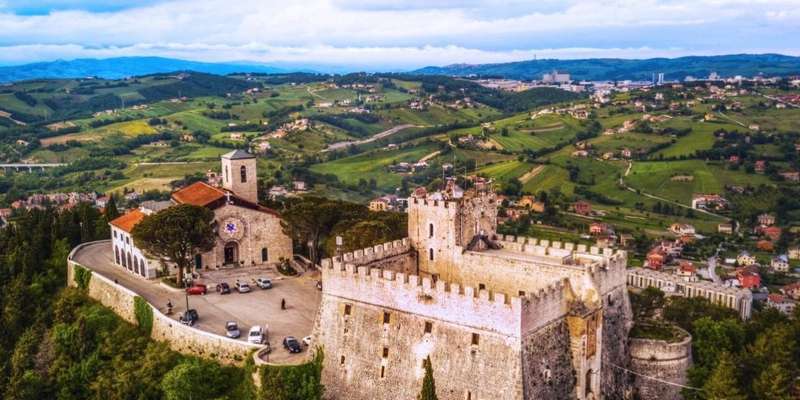- Home
- Useful Tips
- Best areas to stay in...
Exploring Campobasso without a car presents a unique challenge many travelers overlook. Over 60% of visitors to this Molise gem assume they'll need wheels, only to discover parking nightmares in the medieval hilltop district or limited rural transit options. The stress of navigating steep cobblestone streets or missing infrequent buses can overshadow the joy of discovering Italy's least-visited regional capital. Those relying solely on public transport often waste precious hours circling the modern lower town or overpaying for taxis when walkable accommodations exist mere minutes from Romanesque churches and artisan workshops. This quiet city rewards those who know where to base themselves – a single wrong neighborhood choice can mean exhausting uphill treks or isolation from authentic trattorias favored by locals.


Why the historic center beats modern districts for walkability
The centro storico's compact layout makes it Campobasso's obvious choice for car-free travelers. Unlike the sprawling lower town's wide boulevards designed for vehicles, these pedestrian-friendly alleys place you steps from 12th-century landmarks like Monforte Castle and the Cathedral of the Holy Trinity. Morning espresso at family-run bars, afternoon museum visits, and evening passeggiatas all unfold effortlessly within a 10-minute radius. While some fear the uphill location means constant climbing, savvy visitors know Via Mazzini's gentle slope connects key sights without strenuous effort. The real advantage? Staying here eliminates reliance on Campobasso's limited bus system – a relief when services thin after 8pm. Just avoid properties near the steep Salita San Bartolomeo unless you relish calf-burning stair workouts.
How to find authentic apartments near Villa de Capoa gardens
The leafy streets surrounding this 19th-century park hide Campobasso's best-kept lodging secret: locally-owned vacation apartments with full kitchens and laundry. Unlike generic hotels near the train station, these residences give you grocery shopping convenience at the nearby Conad supermarket and picnic-ready access to the gardens' rose arbors. Target Via Marconi or Via Roma for buildings with elevators – a rarity in this historic city. Many hosts provide detailed walking routes to the funicular that connects to the lower town's shopping district. Pro tip: Look for listings mentioning 'centro storico' rather than just 'Campobasso' to avoid misleading locations in distant suburbs. These homes often cost less than €70/night but book early during September's Mystic Nights festival.
Navigating regional buses to nearby villages stress-free
Reaching Molise's hidden hilltop villages from Campobasso without a car requires mastering the SATI bus system's quirks. The secret lies in timing your trips around the 'scuola' (school) schedules – mid-morning departures after 9:30am often have sparse service until afternoon returns. For Saepinum's Roman ruins or Sepino's thermal baths, take line CB-MA004 and validate tickets at the tobacco shop inside the bus terminal. Bring exact change as drivers rarely accept cards. Savvy travelers pack a foldable stool for the 45-minute ride to Guardiaregia's waterfalls, where standing room-only buses are common. Always snap a photo of the return timetable – mobile coverage drops in rural valleys. These adventures prove car-free travel in Molise is possible with local know-how.
Where to stay for seamless train connections to Rome and Pescara
The area surrounding Campobasso's train station offers underrated convenience for rail travelers, despite its unglamorous reputation. Modern B&Bs like Residenza Sveva provide soundproofed rooms and early breakfasts for catching the 6:22am to Termini Station – a direct 3-hour ride to Rome. Unlike the historic center's stair-filled properties, these accommodations feature level access with rolling luggage in mind. The neighborhood's true advantage? Same-day laundry services and 24-hour bakeries perfect for stocking up before long journeys. For coastal escapes, choose hotels near Piazza della Prefettura to minimize walking with bags to the Pescara-bound trains. While less picturesque than the old town, this zone delivers practicality when transport efficiency matters most.
